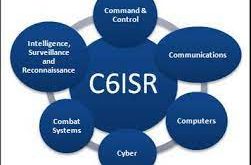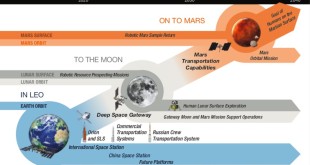The 2018 National Defense Strategy requires that the DOD provide combat-credible military forces to deter war and protect the security of the nation. Specifically, the Joint Force must be able to strike diverse targets inside adversary air and missile defense networks to destroy mobile power-projection platforms and time-sensitive high-value targets. …
Read More »Facial recognition is advancing to Emotion recognition
Facial recognition is a category of biometric software that maps an individual’s facial features mathematically and stores the data as a faceprint. The software uses deep learning algorithms to compare a live capture or digital image to the stored faceprint in order to verify an individual’s identity. Facial recognition technology …
Read More »Turkey emerging as major Military Power and Arms-Industry Powerhouse
Turkey has been playing a crucial role in recent wars. Turkey’s low-cost drones helped alter the balance of power in Ukraine’s battle against the Russian invasion and are transforming conflicts around the world. The Bayraktar TB2—a type of Turkish drone that the Ukrainian military has increasingly deployed against Russian forces …
Read More »DARPA ASKE used AI to automate Scientific Knowledge Extraction and ASKEM using it for data-informed decision making in Military missions
Scientific models – or conceptual representations of complex systems – are used by myriad communities to understand and explain the world around us. Computationally creating these models is a largely manual, cumbersome task that requires scouring mountains of research for relevant content, and then executing multi-step processes to build, validate, …
Read More »China emotional surveillance technology monitoring employees, people’s loyality and soldiers using AI based brain waves and facial expression analysis
China is reportedly testing a sophisticated facial recognition system that could closely monitor targeted people in a Muslim-dominant province. The network is installed at residents’ homes and workplaces in the Xinjiang Autonomous Region in western China, reported Bloomberg. The new face-reading AI technology would alert the authorities if any suspects …
Read More »Missile defense test and measurement
Militaries around the world are increasingly facing a formidable strategic threat environment in terms of complexity, lethality, range, sophistication, and number of threats. These range from Fifth-generation stealth fighters, unmanned air vehicles, and more maneuverable and precision-guided ballistic, cruise, and Hypersonic missiles that are becoming widely proliferated to become more …
Read More »Silicon qubits promise to become core of Quantum Revolution after Microelectronics
Quantum technology (QT) applies quantum mechanical properties such as quantum entanglement, quantum superposition, and No-cloning theorem to quantum systems such as atoms, ions, electrons, photons, or molecules. Quantum bit is the basic unit of quantum information. Whereas in a classical system, a bit is either in one state or …
Read More »Aerospace composite materials for high speed Aircraft and Missile applications
Since the birth of aviation, designers have continuously endeavored to improve the lift-to-weight ratios of aircraft. With increasing fuel costs, commercial aerospace manufacturers are under pressure to enhance the performance of aircraft, for which weight reduction is a key factor. Military forces around the world prefer lightweight aircraft, which …
Read More »Militaries moving from C4ISR and C5ISR to C6ISR
Success in traditional warfighting domains now requires mastering the Information Environment, which includes the electrometric spectrum, space, cyber domain, and the data that crosses them. Rapid data-enhanced decision-making, which increases lethality, defines warfare in the Information Age. Success depends on rapidly understanding the environment and enemy to make decisions faster …
Read More »Mars Robotic, human settlement and colonization Race
The idea of sending humans to Mars has been the subject of aerospace engineering and scientific studies since the late 1940s as part of the broader exploration of Mars. Scientists apart from fiction writers have proposed terraforming to enable the long-term colonization of Mars. Reasons for colonizing Mars include pure …
Read More » International Defense Security & Technology Your trusted Source for News, Research and Analysis
International Defense Security & Technology Your trusted Source for News, Research and Analysis





